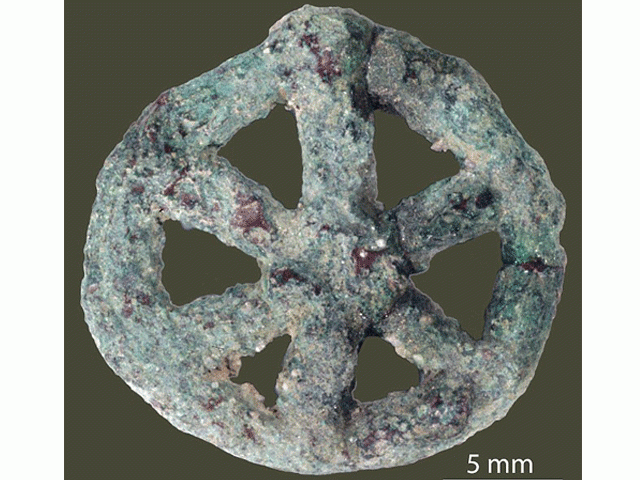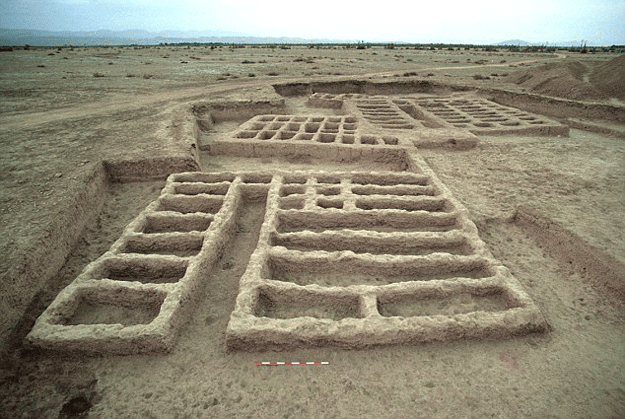
According to a paper published in Nature Communications – a well-cited primary research journal – the wood-wheel-shaped amulet is the first ever example of “lost-wax casting” still in practice.
The imperfect shaped amulet looks green and rusty and was discovered in 1985 by Jean-François Jarrige, a French archaeologist who uncovered a Neolithic Mehrgarh site located near Sibi. But the discovery remained in the dark until it was shined by state-of-the-art lighting and imaging techniques.
 The image shows the remains of mysterious Mehrgarh located near Sibi, Balochistan. PHOTO COURTESY: C. Jarrige, Mission archéologique de l'Indus
The image shows the remains of mysterious Mehrgarh located near Sibi, Balochistan. PHOTO COURTESY: C. Jarrige, Mission archéologique de l'IndusBy analysing the light bounce back from the 2cm-wide amulet, physicist Mathieu Thoury from the French Synchrotron, and his colleagues concluded that the object was carved in a single piece, adding that they did not find any soldering parts even at the joints of the rods. Scientists observed the emitting lights from the amulet shows it was made by pure copper melted at 1,085 degrees Centigrade.
The lost wax casting method
Mehrgarh’s craftsmen used a simple but innovative way to mold the metals in their desired shape.
First they made a copy of the object with any material having low melting point, most probably a lump of beeswax; encased it in a soft clay to form a mold, which was then heated or baked to harden.
Neglected archeological sites
Finally, the molted metal, such as copper, was poured which melted the wax replaced the metal. After the cooling process and smashing the clay model, they got their once piece metal object.
This process is also called “investment casting” and is still used in making of delicate jewellery and small parts of space crafts.
With some advancement, the process was also used to create parts of the Messenger spacecraft which orbited Mercury between 2011 and 2015. It is also used to make numerous metallic parts of the International Space Station.
Speaking to Express News, the key author of the paper, Mathieu Thoury, said: “It is a first discovery which shows the major metallurgy method of lost-wax cast and may have been adopted by other civilisations later on – such as Mesopotamia."
According to the author, the amulet was carved from pure copper found in native areas.
Mehrgarh – the home of innovation
Mehrgarh was a remarkable site where according to some reports, first-ever dentists were found, and cotton was weaved for the first time.
In April 2006, a team of French scholars revealed that the Stone Age man used flint drills for boring teeth some 9,000 years ago.
French archaeologist Christophe Moulherat and his colleague analysed a total of 11 drilled teeth collected from a Mehrgarh graveyard.
In 2002, Moulherat discovered several threads preserved by mineralisation, which are the earliest known examples of cotton thread. The cotton fibres were preserved in copper beads and the study suggested that Mehrgarh was a home for textile making.
Sadly, much of the part of this important site has been destroyed due to tribal clashes.
The writer is a Features Editor at the Express News web desk

















COMMENTS
Comments are moderated and generally will be posted if they are on-topic and not abusive.
For more information, please see our Comments FAQ